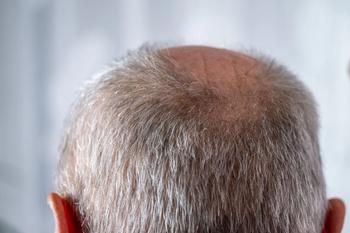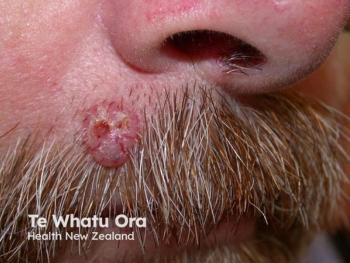
Continuous Treatment With Rupatadine Shows Real-World Efficacy in Chronic Spontaneous Urticaria
Key Takeaways
- Rupatadine demonstrated significant long-term efficacy in reducing symptoms of chronic urticaria, including both chronic spontaneous and inducible forms.
- The study involved 1672 patients, with a focus on 398 receiving rupatadine, showing improvements in UAS7 and UCT scores over 5 years.
Treatment with rupatadine led to improvements in CSU and chronic inducible urticaria.
Continuous treatment with rupatadine, a second-generation antihistamine (SgAH), led to improvements in all forms of urticaria, including chronic spontaneous urticaria (CSU) and chronic inducible urticaria (CIndU), according to results of a new real-world study.1
The study, published in the Journal of the European Academy of Dermatology and Venereology, reported that rupatadine led to effective reductions in symptoms with a long-term safety profile observed.
Background and Methods
To date, numerous studies have reported the efficacy of rupatadine in both CSU and CIndU, including 2 randomized, double-masked trials whose results were published in the European Journal of Dermatology2 and Acta Dermato-Venereologica,3 respectively. In moderate to severe chronic idiopathic urticaria, for example, rupatadine 10 mg and 20 mg exhibited rapid onset of action, which notable reductions in average number of wheals and interactions with daily life.2
Researchers conducted a retrospective, single-center observational study to evaluate the the long-term effectiveness of rupatadine in patients with chronic urticaria. Participants were adults treated with rupatadine (10 to 40 mg) as monotherapy or in combination, with disease activity assessed at baseline and over a 5-year follow-up using the Urticaria Activity Score 7 (UAS7) for CSU and the Urticaria Control Test (UCT) for CIndU. Outcomes were analyzed utilizing real-world data from the CSU-REGMAR registry.
Findings
The URTICARIA Registry provided a dataset of 1672 patients, predominantly women (66.6%) with an average age of 44.4 years. The average duration of their urticaria was 33.5 months, and CSU was the most prevalent diagnosis (46.3%), followed by CIndU at 28.2%.
Initial pharmacological approaches varied, with SgAHs being the most common first line of therapy (45.3%). Rupatadine was frequently prescribed SgAH, both at licensed doses and in updosed regimens.
The study then narrowed its focus to 398 patients receiving rupatadine at baseline, with a subset of 196 maintaining continuous rupatadine therapy throughout the follow-up period.
Over a 5-year follow-up period, the study tracked the evolution of rupatadine treatment strategies. Although monotherapy with rupatadine slightly decreased over time in the overall rupatadine cohort, combination therapies also saw a reduction.
Furthermore, for the cohort of patients on continuous rupatadine therapy, the long-term effectiveness was compelling. Patients with both CSU and CIndU demonstrated statistically significant improvements in their UAS7 and UCT scores, respectively, from baseline to all follow-up visits. This sustained improvement was evident across the 5-year observation period, with substantial reductions in UAS7 scores for patients with CSU and notable increases in UCT scores for patients with CIndU.
More than half of patients with CSU and a notable portion of patients with CIndU achieved minimal clinically important difference after just 1 year of rupatadine treatment, with these percentages increasing substantially at the 3- and 5-year marks.
Conclusions
"After enrolling the largest number of [chronic urticaria] patients in Spain in this registry, we concluded that CSU and CIndU individuals in our sample were treated appropriately with SgAHs according to guidelines and that rupatadine improved the evolution of symptoms associated with CSU and CIndU over the long-term," study authors wrote.
Moving forward, the authors recommended research conducted in real, clinical practice settings to further validate their findings.
References
- Giménez-Arnau AM, Romero C, March M, et al. Long-term real-world effectiveness of rupatadine in chronic urticaria: A retrospective observational study. J Eur Acad Dermatol Venereol. June 8, 2025.
https://doi.org/10.1002/jvc2.70062 - Dubertret L, Zalupca L, Cristodoulo T, et al. Once-daily rupatadine improves the symptoms of chronic idiopathic urticaria: a randomised, double-blind, placebo-controlled study. Eur J Dermatol. 2007;17(3):223-228.
doi:10.1684/ejd.2007.0153 - Abajian M, Curto-Barredo L, Krause K, et al. Rupatadine 20 mg and 40 mg are effective in reducing the symptoms of chronic cold urticaria. Acta Dermatol Venereol. 2016;96(1):56-59. doi:10.2340/00015555-2150
Newsletter
Like what you’re reading? Subscribe to Dermatology Times for weekly updates on therapies, innovations, and real-world practice tips.


















